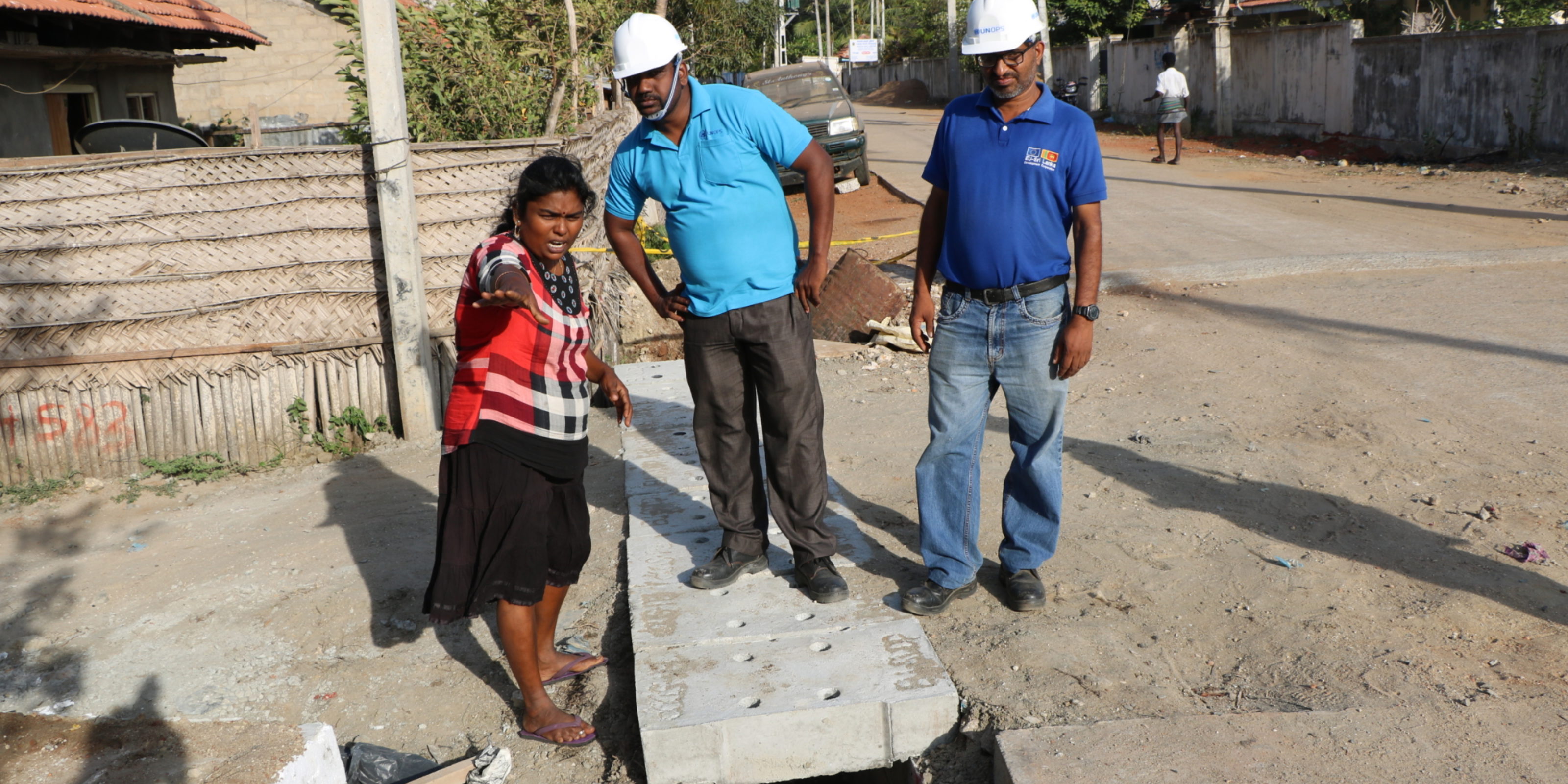The United Nations Office for Project Services (UNOPS)
Heavy rainfall no longer spells disaster
The monsoon season brings torrential rainfall to Mannar Island, in north-west Sri Lanka. This meant bad news for over 30,000 people who live there. Not anymore.
Decades ago, over 70 ponds provided natural drainage to this low-lying area. Since then, many of these were filled-up for the construction of buildings. Further, the roads within the Council were developed with limited drainage and culverts. During the monsoon, water levels would rise between the roads. Septic tanks would overflow and run through the streets.
Severe flooding meant that buses that carried people to their jobs and schools got water-clogged. Classrooms got flooded. Local businesses in markets faced major damages. Electricity would fail and affect the running of hospitals and homes. Many more people suffered from water-borne diseases.


During this time, many villagers were displaced from their homes. They took refuge in temples, community centers and neighbouring villages. Finding dry rations and relief items posed a challenge.
Ann Tharani lives in the area with her husband and two children. Every year, they were affected by the floods. She recounts the experience: "Our children could not go to school and study properly because the neighbouring areas were also affected by the flood and roads were not usable. Many mosquitos were breeding in the flood waters and we were scared they would infect our children with the dangerous Dengue fever."
Close by, another family shares this experience. Ajantha and her husband have three children. They support the family of five by renting out their tractor and selling goods in their small shop. Ajantha is an active member of the community and is the President of the Women Rural Development Society in Mannar.
Caption
- Above: (L) Road flooded during the monsoon. © UNOPS/Anutharshan Pooranasandiran
- (R) Local family explains what happens to their home during the floods. © UNOPS/Simonetta Siligato

All too familiar with the flooding problem, she said: "Flood waters would come inside my house and rise to at least 50 cm above the ground. It damaged my property and furniture. Often, we could not move to safe and dry places nearby because common halls and schools were fully occupied by other affected people. It becomes more complicated as I also need to do my part to assist people."
Over the past few years, UNOPS has helped improve the drainage systems in Mannar. As promised, Ajantha helped: "I gave my assistance to UNOPS for the drainage network design, because I know the natural path of drainage in my area. I have organized our villagers for awareness programmes conducted by UNOPS. I am now assisting the Urban Council to address the encroachment issues that obstruct drainage paths."

Mr. M.A.J Thuram, Assistant Commissioner, Local Government, already sees happy changes: "People now live in a more aesthetic environment. Children go to school regularly because most roads are not flooded anymore. Their inconveniences and risks have reduced. Our emergency relief costs as well as clean-up and maintenance costs have also gone down."
Mrs. Tharani agrees: "We weren't affected by the floods this year because the storm water flowed out through a newly constructed drain in one night."

In 2008, with the funding of the European Union, UNOPS prepared a hydro-geographical map of the Mannar Island to identify key catchment areas and flood patterns. The map was used to recommend action to protect the communities from future flooding. The current interventions are a continuation of this joined effort from the EU, the local authorities and the community in Mannar and UNOPS.
Project details
Under the European Union funded Support to District Development Programme, UNOPS is constructing and rehabilitating social infrastructure in the Batticaloa, Mannar and Vavuniya districts of Sri Lanka. Targeted capacity-building activities will benefit more than 600,000 people.
In Mannar, UNOPS is helping increase the resilience of local communities through better flood-control infrastructure and training. The project is being implemented in collaboration with the Mannar District Secretariat and the Mannar Urban council. It includes the rehabilitation of water-retention ponds and the construction of drainage canal networks.
Local authorities and communities play a key role in supporting UNOPS implement the project. In turn, UNOPS carries out trainings to develop local capacity that will help improve operations and also ensure the maintenance of the new facilities. UNOPS also works with the community to raise their awareness on the role each community member plays in flood prevention and related emergency situations.









